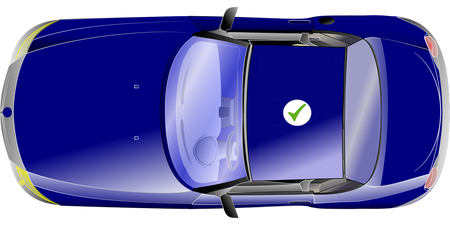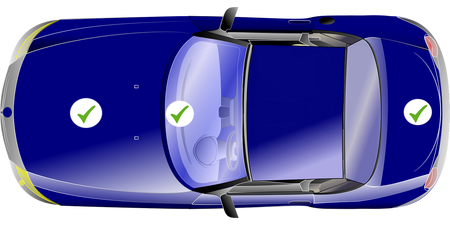LabSat Antenna Placement and Setup
On vehicle
Appropriate placement of the GNSS antenna is crucial to the quality of the data that is being recorded.
Be aware of objects that can shadow the antenna or block the signal to the antenna. Some objects can also reflect signals which can send weaker GNSS signals to the antenna. This is called multipath, and these reflections can disturb the signal in an unpredictable way.
If an antenna is not mounted on a large enough ground plane, multipath reflections can also come from the ground beneath the antenna.
If you are using the antenna without a sufficient ground plane (such as on a bike or carrying the unit by hand), you can put a sheet of metal underneath the antenna (this can for example be copper or aluminium foil) or use an antenna with strong multipath-rejection properties.
Do:
Use the GNSS antenna in the centre of a metal roof or on a metal ground plane that has a radius of at least 5 cm.
Make sure that the GNSS antenna is placed away from anything than can cause blockages or multi-path, such as roof bars or radio antennas.
Do not:
Mount the antenna close to the edge of the roof as reflections from the ground may interfere with the signals.
|
Illustration of the recommended GNSS antenna placement location on a vehicle. |
Illustration of alternative GNSS antenna placement locations on a vehicle. |


